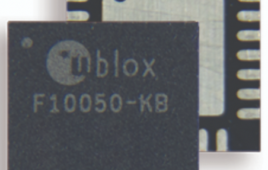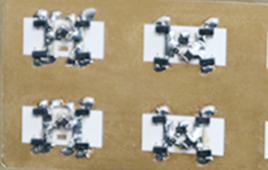The physicists from ITMO University, Ioffe Institute and the Australian National University examined a new mechanism of realization of high-quality optical resonators. It is based on the mutual destructive interference of two low-quality optical states in one resonator allowing for secure “trapping” of light in various materials even at small scales. The theoretical results of the work were confirmed experimentally, laying the basis for new miniature devices: effective sensors, optical filters and nonlinear light sources. The research paper is published in SPIE Advanced Photonics.
In general, Fano resonances arise due to the interaction of two waves with a certain relation between the amplitudes and phases, for example, during the electromagnetic radiation scattering. This process is actively investigated and widely used to create resonators: devices that amplify the electromagnetic signal. The main parameters of Fano resonances, determining the peak width and asymmetry, were usually considered as independent. Therefore, they were tuned separately so as to achieve the maximum quality factor (Q factor): feature, showing how well the resonator traps and enhances the radiation.
However, the scientists from ITMO University showed that the resonance parameters are connected: when the resonance peak in the spectrum of the scattered radiation becomes symmetric, its width becomes minimal, leading to the maximum Q factor. This happens when t the resonator geometry changes and cause an unusual interaction of several states or modes. Physicists linked this phenomenon with the recently proposed class of resonators, which work on a subwavelength scale for a wide class of materials.
“Usually, to create a high-quality resonance, one need to trap the light somewhere using good mirrors or an environment with a high refraction index, from which the light will not exit easily. But we found a new mechanism for light trapping and described it in our earlier papers. It is based on two low quality modes, each trapping the light weakly, which together can form a new state with a very high Q factor. Two minuses make an plus. In this work we conducted experiments to prove it and developed a deeper theoretical understanding,” explains Kirill Koshelev.
As a result, scientists for the first time showed experimentally that such unusual interaction of resonances is possible. The experiment was done in microwaves with using a cylindrical vessel. The vessel was being filled with water drop by drop, so that the pillar height was constantly changing. At the same time, using a special sensor, researchers measured the resonances quality factor and frequency.
“The work began with a theory: Kirill Koshelev proved that high quality factor is always accompanied by a symmetrical form of resonance. These results were confirmed in the experiment by Polina Kapitanova and Mikhail Rybin. Now we are working on the practical application of these resonators. Recently, we proposed a nonlinear frequency converter of light based on high-quality disk resonators. Now we continue to experiment on other materials. In addition, our results are used to create sensitive compact sensors. Alexey Slobozhanyuk is currently working on them,” adds Andrey Bogdanov.




